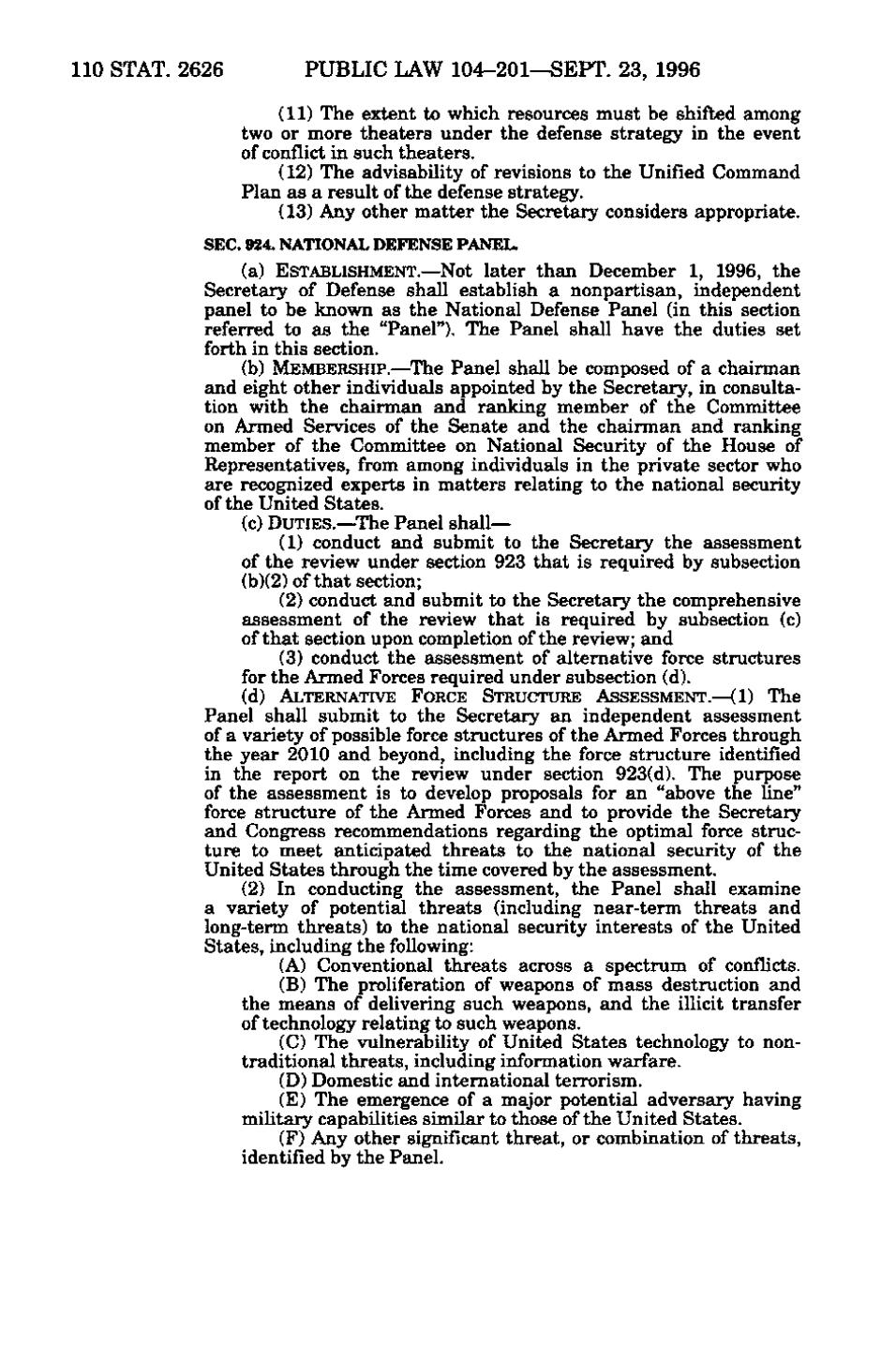110 STAT. 2626 PUBLIC LAW 104-201—SEPT. 23, 1996 (11) The extent to which resources must be shifted among two or more theaters under the defense strategy in the event of conflict in such theaters. (12) The advisabihty of revisions to the Unified Command Plan as a result of the defense strategy. (13) Any other matter the Secretary considers appropriate. SEC. 924. NATIONAL DEFENSE PANEL. (a) ESTABLISHMENT.—Not later than December 1, 1996, the Secretary of Defense shall establish a nonpartisan, independent panel to be known as the National Defense Panel (in this section referred to as the "Panel")- The Panel shall have the duties set forth in this section. (b) MEMBERSHIP. —The Panel shall be composed of a chairman and eight other individuals appointed by the Secretary, in consultation with the chairman and ranking member of the Committee on Armed Services of the Senate and the chairman and ranking member of the Committee on National Security of the House of Representatives, from among individuals in the private sector who are recognized experts in matters relating to the national security of the United States. (c) DUTIES. — The Panel shall— (1) conduct and submit to the Secretary the assessment of the review under section 923 that is required by subsection (b)(2) of that section; (2) conduct and submit to the Secretary the comprehensive assessment of the review that is required by subsection (c) of that section upon completion of the review; and (3) conduct the assessment of alternative force structures for the Armed Forces required under subsection (d). (d) ALTERNATIVE FORCE STRUCTURE ASSESSMENT.—(1) The Panel shall submit to the Secretary an independent assessment of a variety of possible force structures of the Armed Forces through the year 2010 and beyond, including the force structure identified in the report on the review under section 923(d). The purpose of the assessment is to develop proposals for an "above the line" force structure of the Armed Forces and to provide the Secretary and Congress recommendations regarding the optimal force structure to meet anticipated threats to the national security of the United States through the time covered by the assessment. (2) In conducting the assessment, the Panel shall examine a variety of potential threats (including near-term threats and long-term threats) to the national security interests of the United States, including the following: (A) Conventional threats across a spectrum of conflicts. (B) The proliferation of weapons of mass destruction and the means of delivering such weapons, and the illicit transfer of technology relating to such weapons. (C) The vulnerability of United States technology to nontraditional threats, including information warfare. (D) Domestic and international terrorism. (E) The emergence of a major potential adversary having military capabilities similar to those of the United States. (F) Any other significant threat, or combination of threats, identified by the Panel.
�
